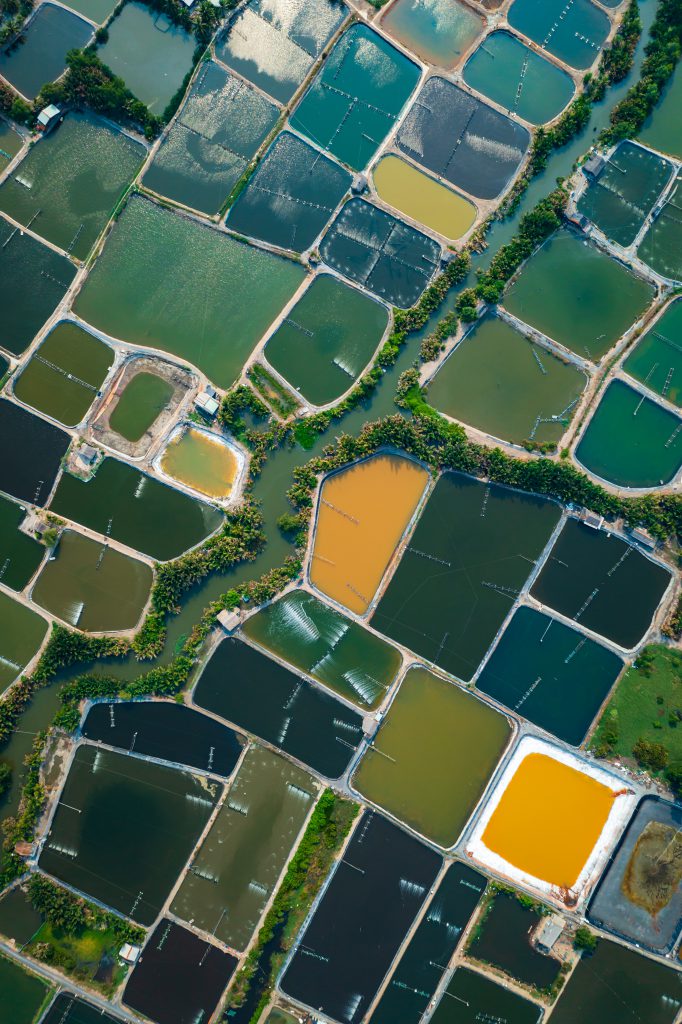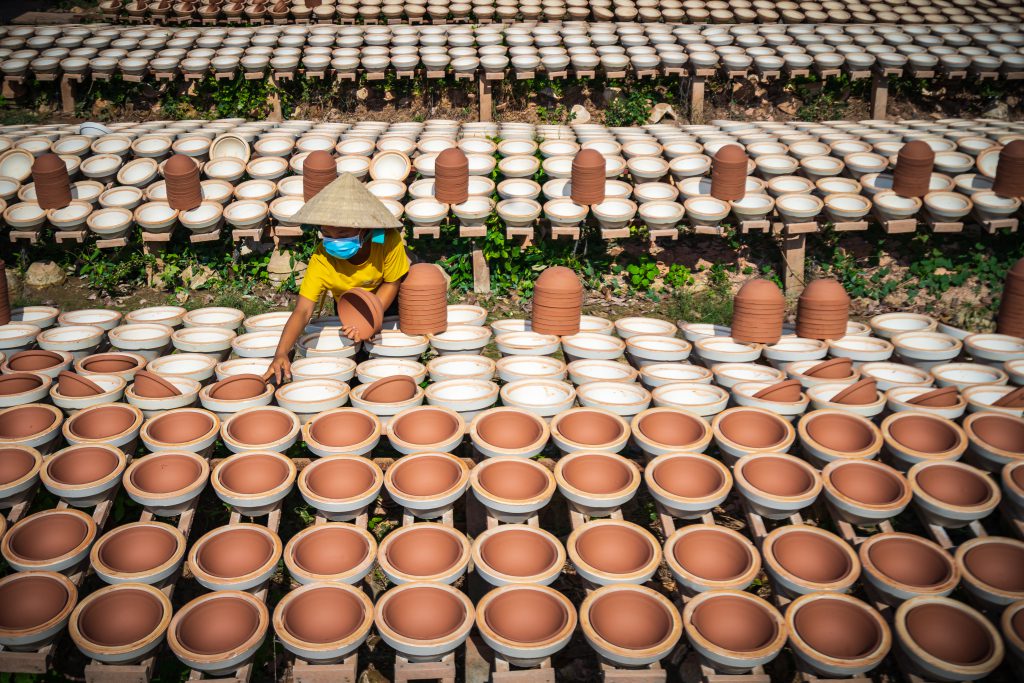Story: Huynh Phuong
Photos: Thu Phan
Explore Vietnam’s rural South with a trip along the Vam Co Dong River.

“A little boat takes me to my small town. I can hear people humming, near and far. My hometown river is as dazzling as the ivory moon. Hearing a song from afar stirs up memories…”
These are the lyrics of a famous song titled “Dong song que em” (Hometown River) written by composer Huyen Nhung (born in 1950) in the “vong co” (nostalgia) genre. The song depicts the serene Vam Co Dong River and heroic memories etched into the hearts of people nationwide.
Exploring the Vam Co Dong River
The Vam Co winds through Vietnam’s South, forming part of the Dong Nai River system. It flows from Cambodia into Vietnam, with a total length of 280 kilometers. The Vietnamese portion of the river spans over 190 kilometers and is divided into two tributaries, the Vam Co Dong and the Vam Co Tay. Historical French records indicate that the name “Vam Co” originated from a mispronunciation of the Khmer term “piăm vaïco,” meaning “cow pasture,” suggesting that cows and buffaloes once grazed along the riverbanks.
The Vam Co Dong River enters Vietnam at the border of Thanh Long Commune in Chau Thanh District and crosses several districts, including Ben Cau, Hoa Thanh, Go Dau, and Trang Bang in Tay Ninh province. It then flows through Duc Hoa, Duc Hue, Ben Luc, and Can Duoc districts in Long An province. In Tan Tru District in Long An province, the Vam Co Dong merges with the Vam Co Tay to form the Vam Co River. This segment of the Vam Co serves as the natural and administrative boundary between Long An province (with Can Duoc District on the left) and Tien Giang province (with Go Cong town and Go Cong Dong District on the right), before pouring into the Soai Rap River and eventually reaching the East Sea. Notably, the meeting point of the Vam Co River and the Soai Rap River is known as “Vam Bao Nguoc” (Extreme Curves) due to the rivers’ meandering nature as they form three curves and appear to embrace each other.
Endless inspiration
The legendary Vam Co Dong River has inspired many lyrical and sweet folk songs, poems, “tan nhac” (new music) songs, and “vong co” songs. The river boasts the graceful beauty of a lady bowing to welcome honored guests.
“Oh, the swift currents of the Vam Co River. Thuy Kieu parts with Kim Trong like you and I. The Vam Co River is crystal clear, while the Cuu Long River flows gently. Those who travel to My Thuan, Tien Giang, do you still hold this old musician in your heart?”
One notable poem, “Vam Co Dong,” was written in 1963 by the poet Hoai Vu (real name: Nguyen Dinh Vong, born in 1935 in Quang Ngai). During his time working in Area “R”, the code name for the command center of the revolutionary forces in Tay Ninh, he traveled downstream along the Vam Co River to Long An, which inspired him to write the verse:
“Far away on the Red River/ Do you know that my hometown/ Also lies by a river that I dearly call Vam Co Dong! / Oh, Vam Co Dong, oh… Oh Vam Co Dong, such a beautiful river/ Its clear water remains unchanged, then and now…”
This poem was later transformed into a song of the same name by the musician Truong Quang Luc (born in 1935). The river’s enchanting nature is also reflected in the lyrics of another nostalgic song “Dong song que em” by composer Huyen Nhung.

Exploring the river’s banks
The Vam Co River is intricately linked to many historical sites, notably the ancient towers of Binh Thanh in Trang Bang, Tay Ninh. Built around the 8th century, these well-preserved towers stand as quintessential examples of the architecture of the Oc Eo culture. Another significant site is Nguyen Trung Truc Temple in An Nhut Tan Commune, Tan Tru District, Long An. This temple was built to commemorate the “Hoa hong Nhut Tao oanh thien dia” (Earth-shattering fire of Nhut Tao) – a battle led by the fisherman-turned-hero Nguyen Trung Truc in Nhat Tao in December 1861.
In the past, the Vam Co Dong River was a key transport route for people in Tay Ninh and Long An provinces, linking them to nearby areas and other rivers. Over time, as modern bridges like Ben Soi, Go Chai, Ben Dinh, An Phuoc, Duc Hoa, and Ben Luc were built across the river, ferries gradually disappeared, but their memories live on. The upper course of the river provides crucial water for agricultural activities, while the middle course (Duc Hoa, Ben Luc, Long An) has become a strategic area for the development of industrial parks. The lower course is well-suited to high-yield shrimp farming and the cultivation of Indian mahogany.
The Vam Co Dong River also offers great tourism potential. Travelers can explore various attractions, including Lo Go – Xa Mat National Park in Tay Ninh. They can enjoy ecotourism tours along the Vam Co Dong River that include stops at high-tech dragon fruit gardens, vineyards, and the Can Giuoc Martyrs Monument, plus overnight stays in homestays on the Can Giuoc River in Long An. Walking beside the Vam Co Dong River, visitors can witness the rustic lives of local farmers as they work in the fields during the rainy season, enjoy the vibrant atmosphere of the harvest season, and explore traditional craft villages.
“When we go out with the locals, nothing compares to the excitement of raising a glass of Go Den liquor to warm our bodies while sharing stories of our history, recalling the heroic traditions of our homeland, and singing songs filled with love for our hometown and its river, Vam Co Dong! Oh, Vam Co Dong!” said Thu Phan, a photographer from Long An.










